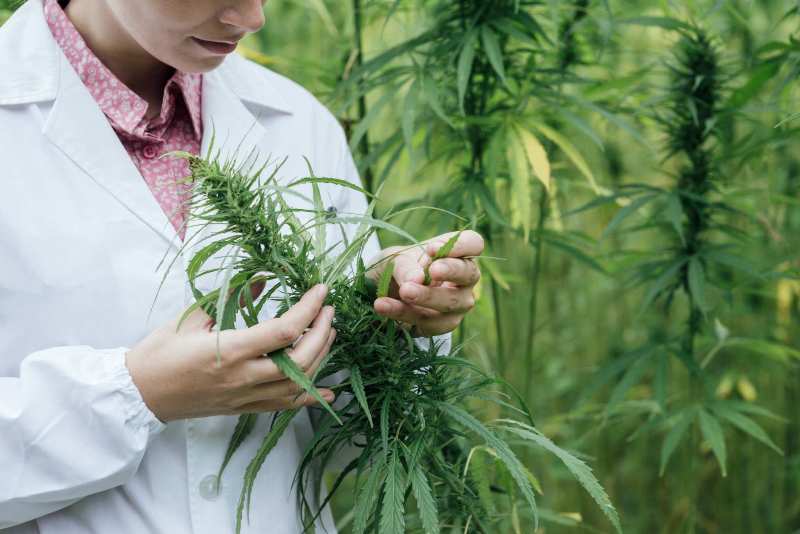Hemp
What Is Hemp?
Throughout cannabis prohibition, including that which persists at a federal level in the United States, one of the more ludicrous side effects has been the criminalization of producing industrial hemp. This aspect of cannabis prohibition would be similar to banning non-alcoholic beer during alcohol prohibition of the 1920s—it’s blocking access to a related, though very different product solely because of its association with one that is seen as undesirable.
This strange aspect of cannabis prohibition reveals a deep misunderstanding of hemp, what it is, what it’s used for, and how it differs from the marijuana that we love for its psychological and physiological effects. In truth, hemp leaves look similar to those of cannabis, and it contains trace amounts of THC, but that’s about where the similarities end. This article will take a look at the history of hemp, its properties, its uses, and its future.
WHAT’S IN A NAME?
Surely some of the confusion and conflation of hemp and medicinal marijuana stem from the family’s confusing taxonomy.
Both industrial hemp and medical marijuana belong to the species of cannabis sativa. The simplest way to think of the distinction between hemp and marijuana is simply that hemp is a cannabis plant bred for its fibre or seeds, whereas marijuana is bred for the medicinal properties found in its flower. Their differences (which are considerable) are simply variations achieved through selective breeding.
Similar to medical marijuana, hemp’s first recorded cultivation was in ancient China in 2800 BCE. The cultivation of cannabis for industrial uses gradually spread throughout the world, ultimately being planted in North America in the 1600s.
The two subspecies would have once been much more similar, but selective breeding over the centuries and millennia took them in very different directions. Hemp was bred to produce strong fibres, which were used to make clothing, rope, organic construction materials, and a number of other products.
Marijuana, on the other hand, was bred for maximum trichome production, which allows for high THC content and other medicinal properties.
PROPERTIES
Arguably the greatest distinction between hemp and marijuana is the production of THC. THC is the cannabinoid, or medicinal property, that most consumers are seeking from marijuana. THC conveys a number of medicinal benefits, and it is also responsible for cannabis’ psychoactive high. Modern strains of marijuana can contain upwards of 30% THC content. By contrast, and by its very definition, hemp contains negligible amounts (generally less than 0.3%) of THC, and cannot get you high. Interestingly, hemp can contain more CBD than most marijuana strains.
Generally speaking, hemp plants tend to be tall and skinny while their marijuana counterparts are short and stout. Hemp stalks can grow up to five metres tall without the use of pesticides. Hemp leaves tend to be thinner and more spread out than those of marijuana, which tend to be thicker and tightly clustered, in order to protect their precious flower.
Hemp is easy to grow outdoors, and is commonly cultivated in sandy soil and in areas which receive at least 60mm of rain per month. Hemp is typically cultivated annually from seed. Modern marijuana strains are much more delicate, and require precise climate-controlled conditions to achieve their desired form.
USES
The analogy between marijuana/hemp and alcohol/non-alcoholic beer used earlier in this article is actually not very accurate, because unlike non-alcoholic beer, hemp has an incredible number of useful applications that have nothing to do with the primary use of marijuana.
Harvested hemp undergoes rigorous processing to obtain fibre. Stalks are retted, dried, crushed, and shaken, ultimately separating the long fibres from the woody portion of the plant. These fibres are often over one metre long. These fibres are used for a number of applications, such as clothing in ancient Japan. The fibres are not easily bleached, and therefore tend the retain their natural colour as opposed to being dyed. Most common applications are cordage, sacks (burlap), and canvas.
Hemp is also cultivated for its seeds. While hemp seeds have historically been sold primarily as bird feed, they are also fit for human consumption, and marketed as a health food. Shelled hemp seeds, popularly referred to as hemp hearts, are added to cereal or sprinkled on salads, and are high in protein, fibre, magnesium, and omega acids.
Of course, big moves are happening in world of cannabis. Hemp production goes hand in hand with the legalization of medical and recreational marijuana. As tensions and laws relax in North America, politicians and industry leaders are rediscovering the potential of hemp. The hemp market in the United States is expected to be valued at 1.65 billion dollars in 2021, six times the market’s value in 2017. American Senator Mitch McConnell has gone so far as to speculate that the production of industrial hemp may become as big as tobacco once was for the state of Kentucky.
Australia, Canada, France, Russia, Ukraine, the United Kingdom, and other countries already have quite established hemp industries, and as restrictions on cannabis continue to be lifted, we can only expect that list to grow.
A HEMP-FUELED FUTURE
The plethora of applications of industrial hemp has led many historians to wonder at the motivations behind the 20th-century prohibition of cannabis, with many believing that it was initiated under pressure from economic heavy-weights whose timber and nylon interests would be threatened by hemp’s efficiency and usefulness. By all accounts, hemp is a product which is easy to cultivate, sustainable, and has an incredible number of applications which—in addition to those already discussed in this article—include usage in: plastic and composites, paper, jewelry, shoes, weed control, biofuels, animal bedding, and more.
It’s easy to grow, simple to process, and its applications are broad. With the recent passing of the Farm Bill by the American Senate, the United States is closer to federally legalizing the production of hemp, and joining the already considerable list of nations reaping its benefits. With increased resources being applied to the study and development of both hemp and marijuana, we can only expect these two closely related subspecies to move further and further apart, becoming more specialized, and more effective.


